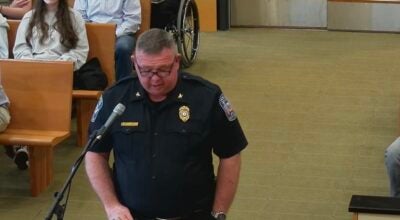Free Civil War Seminar set
Published 5:00 pm Thursday, January 20, 2022
|
Getting your Trinity Audio player ready...
|
Join the National Park Service and Longwood University at the annual free Civil War Seminar on Feb. 12, located in the Jarman Auditorium at Longwood University, Farmville. Noted scholars will present on topics ranging from “The Bahamas to Camp Nelson.”
This seminar is free and open to the public. No reservations needed. Parking is available on Longwood University campus except in 24 hour reserved spaces, handicapped or tow-away zones. Lunch is available at the Longwood University Dining Hall.
PROGRAM SCHEDULE:
• 8:30 a.m. Doors open
• 9 a.m. Introduction by Dr. David Coles
• 9:10 a.m. Chuck Ross, The Bahamas during the Civil War
On April 16 1861, President Abraham Lincoln issued a blockade of the Confederate coastline. The largely agrarian South did not have the industrial base to succeed in a protracted conflict. What it did have—and what England and other foreign countries wanted— was cotton and tobacco. Industrious men soon began to connect the dots between Confederate and British needs. As the blockade grew, the blockade runners became quite ingenious in finding ways around the barriers. Nassau, Bahamas, became a focal point for the blockade running action.
Boats worked their way back and forth from the Confederacy to Nassau and England, and everyone in the Bahamas wanted a piece of the action. Poor men became rich in a single transaction, and dances and drinking—from the posh Royal Victoria hotel to the boarding houses lining the harbor— were the order of the day. British, United States, and Confederate sailors intermingled in the streets, eyeing each other warily as boats snuck in and out of Nassau’s harbor. But it was all to come crashing down as the blockade finally tightened, and the final Confederate ports were captured.
• 10:15 a.m. Ronald S. “Ron” Coddington, Faces of the Civil War Navies
During the American Civil War, more than one hundred thousand men served on ships at sea or on one of America’s great inland rivers. From Charleston Harbor to the Mississippi River and other inland waterways across the South, Union gunboats were often the first to arrive in deadly enemy territory. In the Gulf of Mexico and along the Atlantic seaboard, blockaders in blue floated within earshot of gray garrisons that guarded vital ports. And on the open seas, rebel raiders wreaked havoc on civilian shipping. This program covers the stories of sailors on both sides of the conflict.
• 11:30 a.m. Ernie Price, Camp Nelson National Monument: America’s Complicated Soul
Camp Nelson National Monument became the 418th unit of the National Park Service in October 2018. Constructed in 1863 by order of Gen. Ambrose Burnside, this Central Kentucky site served as a major supply depot to support a campaign to Knoxville and East Tennessee. The campaign was successfully executed in the late summer of 1863, but Camp Nelson’s story took a dramatic shift in the spring of 1864. The Emancipation Proclamation did not apply to Kentucky, so it was a slave state in the Union. In early June 1864 though, military orders for the Department of Kentucky were issued that allowed enslaved men of fighting age to enlist and be emancipated. During the final year of the war, Camp Nelson became one of the largest recruiting and training stations for United States Colored Troops and a large refugee center for enslaved people. The refugee center became so large that the camp did not close when the war ended, but remained open until the summer of 1866.
• 12:30 p.m. Lunch
• 1:45 p.m. Michael C. Hardy, Lee’s Body Guards
They considered themselves Lee’s body guards. Officially, they were known as the 39th Battalion, Virginia Cavalry. They were “hard-bitten, reckless young men who served as couriers” for the senior leadership of the Army of Northern Virginia. Not only were they couriers, but they drove headquarters wagons, scouted and worked as clerks. While crucial to army operations, they are largely overlooked in the histography. Discover the roles played by Lee’s body guards.
• 2:45 p.m. Steve T. Phan, Washington, DC, at War: The Civil War Defenses of Washington
By 1865, Washington, DC, was surrounded. An elaborate system of fortifications sat on the high hills, long ridges, and flat plateaus that encircled the capital of the United States. Now, as the Civil War approached its bloody conclusion, 68 major forts supported by 93 detached batteries mounting over 900 guns and connected by 32 miles of military roads made Washington one of the most heavily fortified cities in the world. The Defenses of Washington evolved over the course of the war, expanding in size, scope, and firepower in direct response to the campaigns occurring on every side of the city.
Schedule is subject to change.
Directional signs will be posted on the Longwood University Campus. For directions to the campus go to www. longwood.edu. For more information contact Dr. David Coles at 434-395-2220 or Patrick Schroeder at 434-352-8987, Ext. 232.
This annual seminar is sponsored by: Appomattox Court House National Historical Park, Eastern National America’s National Parks Stores, The Department of History, Political Science and Philosophy and the Center for Southside Virginia History at Longwood University.




